Menlo/Menlough Castle
Houses within 15km of this house
Displaying 64 houses.
Houses within 15km of Menlo/Menlough Castle
Displaying 64 houses.
| House name | Description | |
|---|---|---|
| Ardfry | Lewis mentions the seat of Lord Wallscourt in the parish of Oranmore but refers to it as Wallscourt rather than Ardfry, which is actually located in the parish of Ballynacourty. The Ordnance Survey Name books mention it as Ardfry House, the residence of Lord Wallscourt At the time of Griffith's Valuation it was being leased by the trustees of Lord Wallscourt's estate to Pierce Joyce when it was valued at £60. The house was built in the late 18th century and altered in 1826. The seat of Lord Wallscourt in 1894 and in 1906. It has been in a derelict state since the mid-20th century. In 2006 it was offered for sale as part of a scheme to create luxury apartments in the building. |

|
| Mervue/Merview | Built circa 1777 by the Joyces. In 1786 Wilson refers to a house near Galway as the seat of Dr. "Joice". The house was sold by them to Royal Tara China in 1953. This company occupied the building for over 50 years, closing down at the end of 2003, though the shop premises still operates from this building. A fire badly damaged the original building in 1957. |

|
| Rinville House | Lewis records the house at Rinville as the seat of T.L. Athy in 1837. Earlier in 1814 it was the residence of Phillip Athy. At the time of Griffith's Valuation it was valued at £48 and was occupied by Randal Athy. A second property in the townland of Rinville West was leased by the Athy estate to Patrick Blake. In 1906 Rinville was owned by Edmond J. Athy and was valued at £43. It is now an ivy covered ruin. Part of the demesne lands are a public park maintained by Galway County Council. A gate lodge is still extant but unoccupied. A graveyard for the Oranmore area has been established on part of the demesne lands. |
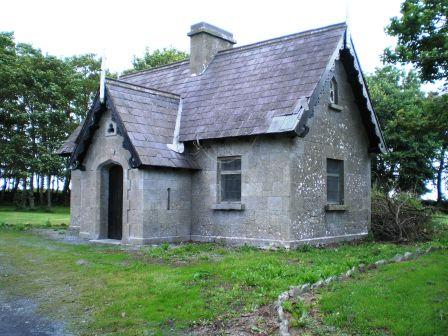
|
| Cottage (Dunkellin) | In 1837 Lewis recorded Cottage as the seat of J. Ryan. Catherine Ryan was leasing the house from Randall Athy at the time of Griffith's Valuation when it was valued at £17. The house at Cottage was part of the Athy estate which was sold in the Encumbered Estates court in July 1857. The new owners, John Edmond Crofton Kelly and Edmond Walker Kelly offered it for sale again in June 1866. At this time the house at Cottage was leased to the representatives of Thomas Redington for 21 years from 1856. By 1906 it was owned by Charles V. Pratt together with 150 acres of untenanted land. The ruins of the house and other buildings are visible at the site. |

|
| Prospect Hill | At the time of Griffith's Valuation the house and buildings at Prospect Hill were in the ownership of Lord Wallscourt's trustees and were valued at £21. Earlier, the Ordnance Survey Field Name Books mention Mr. Dawson of Prospect, as the agent to the Wallscourt estate. There is still a house at the site but it is not the original one. |

|
| Seafield | Seafield House is no longer extant though evidence of walled gardens and out buildings are still visible. It was the residence of Robert Blake in 1814. In 1824 it was the residence of Henry Blake who offered it for letting in the ''Connaught Journal'' in May of that year. The Ordnance Survey Field Name Books noted Seafield as the residence of Mr. Blake's steward. At the time of Griffith's Valuation it was leased by the Blake estate to Matthew Fynn and was valued at £6. | |
| Furzepark House | This house is noted on the 1st editon OS Map as Furze Park House but it may later have been known as Seafort House. The Ordnance Survey Name books describe it as a "bathing lodge, belonging to Mr. J. Smith, Loughrea". It was leased by the Blake estate to Martin Morris at the time of Griffith's Valuation when it was valued at £9. By 1906 the buildings owned by Lord Wallscourt at Treanlaur were valued at almost £2. Substantial ruins of this house are still visible. |

|
| Ballynamanagh | At the time of Griffith's Valuation, Thomas Redington was leasing a house valued at £4 at Ballynamanagh, barony of Dunkellin, to John Caven. It was accompanied by almost 100 acres. Kelly noted that it had been the property of Mr.Burke of Carheen for over 100 years but was later in the possession of the Redington estate. This house is still extant and occupied. |
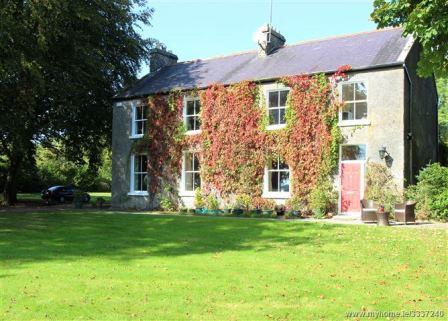
|
| Tyrone | Tyrone was built in the early 19th century. It is described in the OS Name Books as "a beautiful residence" in the 1830s. At the time of Griffith's Valuation, it was in the possession of Christopher St.George and was valued at £50. In 1894 Slater notes it as the seat of Robert J.K. St.George. The family ceased to live there in the early twentieth century. Its ruins can be seen overlooking the estuary of the Clarin river. |

|
| Furbogh House | At the time of Griffith's Valution, Andrew Blake held this property in fee when it was valued at £34. Furbough was demolished in the later twentieth century. The remains of the walled garden are still visible. |
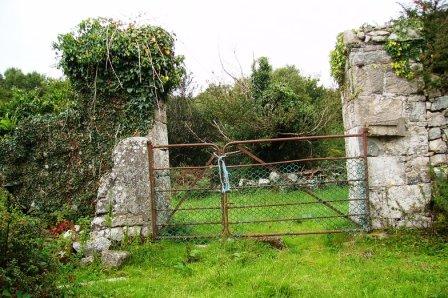
|
| Corcullen/Kirkullen House | The house valued at £21 was vacant at the time of Griffith's Valuation. Michael D. Browne was the immediate lessor. It is shown as a considerably enlarged structure on the 25-inch map of the 1890s. Buildings are still extant at the site. | |
| Danesfield | At the time of Griffith's Valuation, George E. Burke was leasing Danesfield to Henry Daly when it was valued at over £23. The house is demolished, however the yard bell holder and the remains of the walled garden are still visible. |
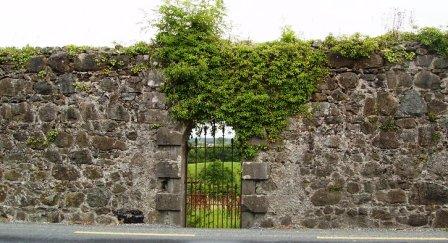
|
| Drimcong | Originally a Lynch home which was sold to the Kilkellys in the early 19th century. Wilson refers to it as the seat of Mr. Lynch in 1786. It was held in fee by James Kilkelly at the time of Griffith's Valuation when it was valued at almost £16. In the late 20th century Drimcong House functioned as a gourmet restaurant, it is now a private residence. |

|
| Ross | In 1786 Wilson refers to Ross as the seat of Mr. Martin, It was held in fee by James Martin at the time of Griffith's Valuation, when it was valued at £20. On the shore of Ross Lake, the childhood home of the author, Violet Florence Martin is now open to the public for part of the year. Home of Claude Chevasse in the 20th century and later restored by the McLaughlin family, who reside there. |

|
| Knockbane | Occupied by Anthony O'Flaherty at the time of Griffith's Valuation and valued at £33. The house no longer exists but extensive farm buildings are still visible. The property is still owned by descendents of Anthony O'Flaherty. |
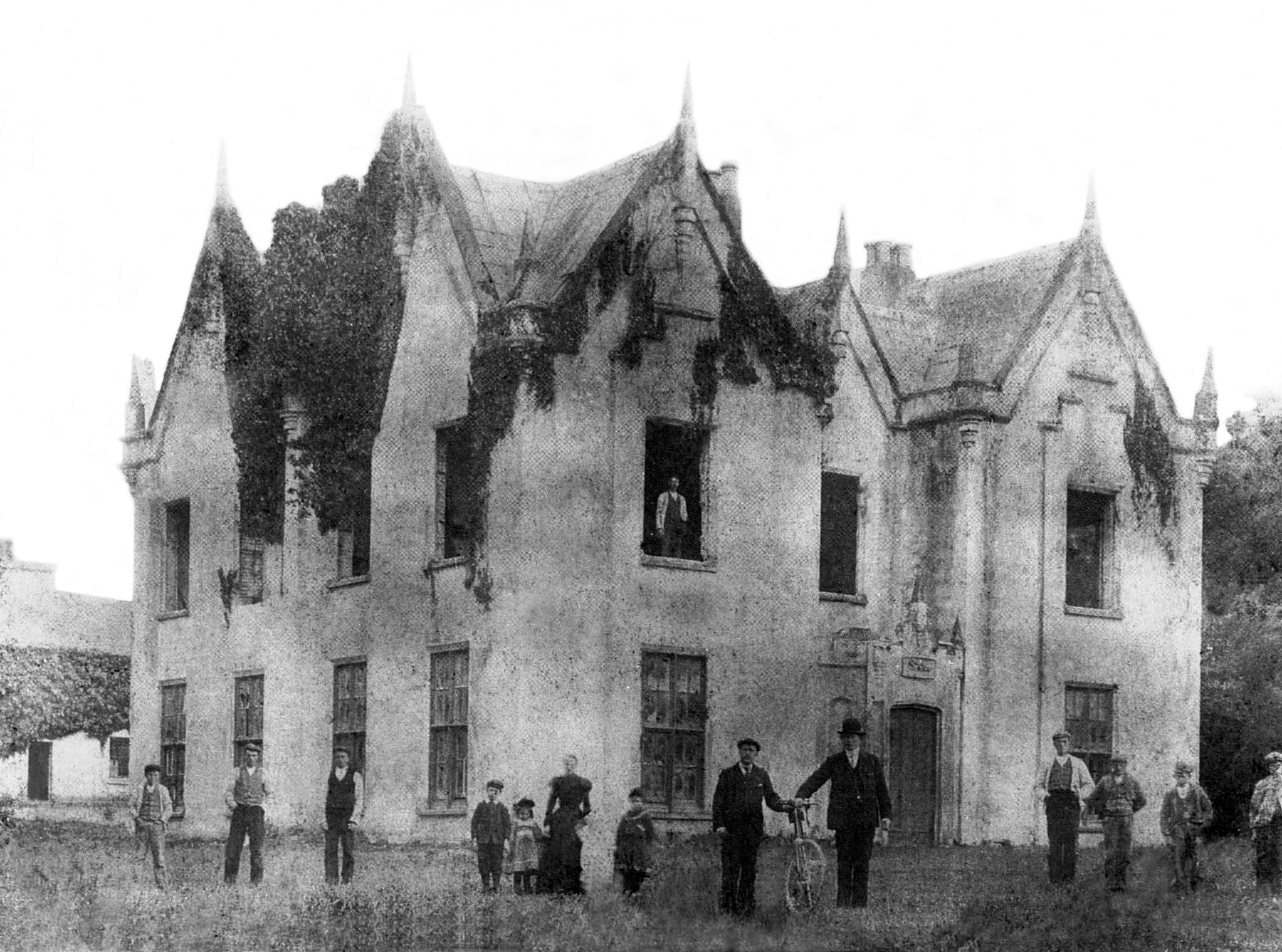
|
| Lenaboy Castle | This property was held in fee by James O'Hara at the time of Griffith's Valuation when it was valued at £40. In 1786 Wilson refers to a house at Galway which was the seat of Geoffrey O'Hara. Bence Jones describes the house as Tudor Gothic, early to mid 19th century, while the National Inventory of Architectural Heritage notes that the current building is dated 1859. It is now a Health Services facility. |
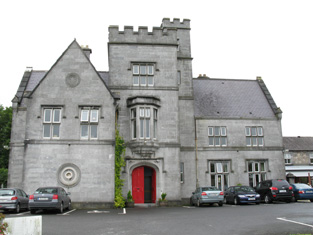
|
| Stradbally | Griffith's Valuation shows that Christopher St.George had what are described as "offices" valued at £16 in the townland of Stradbally West, parish of Stradbally, barony of Dunkellin. This was the stable complex for Tyrone House and adjacent to the walled garden which was part of the estate. |

|
| Seamount Lodge | The Clanmorris family had a residence in the Salthill area of Galway at Pollnarooma East parish of Rahoon, leased from Richard Sloper. It was valued at £21 at the time of Griffith's Valuation. A house named Seamount Lodge is marked on the first Ordnance Survey map in this townland. Seamount was the home of Sebastian Nolan of the Ballinderry family in the late 19th century. It was in use as a nursing home in the twentieth century before being demolished to make way for the housing estate of the same name. | |
| Merlin Park | A house on the outskirts of Galway, built by Charles Blake in the first decade of the 19th century. Bought by Henry Hodgson in the Encumbered Estates' Court in 1852. It was held in fee by him at the time of Griffith's Valuation and valued at £65. Merlin Park was purchased by the Waithman family in 1876 and in their ownership until 1945. Thereafter it was compulsorily acquired for the building of a TB sanitorium. The house no longer exists and Merlin Park Hospital now occupies the site. |

|
| Barna | Wilson refers to Barna as the seat of Mr. Lynch in 1786. Nicholas Lynch held this property in fee at the time of Griffith's Valuation,when it was valued at £20. It was the seat of Marcus Lynch in 1894 and the family were still resident in the early 20th century. The house is still extant surrounded by an apartment development. |

|
| Glenlo | A house called Kentville was occupied by the Martin family in the late 18th century though Wilson mentions a Mr. Irwin living there in 1786. By 1824 Thomas Redington was occupying Glenlo, which became the home of Thomas Blake in the mid 19th century and of the Palmers in the late 19th century. Now functions as a hotel. |

|
| Riverview | At the time of Griffith's Valuation held by James Browne in fee and valued at £14. It is described as "in ruins" on the 25-inch Ordnance Survey map of the 1890s. | |
| Brownville | This house was originally known as Eyreville and was leased by the Martins to the Eyres in the latter half of the 18th century. Wilson refers to it as the seat of Mr. Eyre in 1786. In 1808 it was sold to James Valentine Browne and the name of the house was changed to Brownville. In the later 19th century it was the home of Dr McCormack, the Bishop of Galway. Portions of the original house may have been incorporated into out-buildings at the rear of the site. | |
| Woodstock | In 1786 Wilson refers to Woodstock as the seat of R. Shaw. The home of Stephen Blake in 1814, it later became the home of the Comyn family. The house was burnt down in June 1877 and never rebuilt. The family mainly resided in France afterwards. | |
| Killeen | Originally known as New Park, Killeen House was bought by Peter S. Comyn from the Martins in 1849 and it became his main residence. He died in 1866 and left the house to his niece Rose Comyn. It is still extant and was run as a luxury guesthouse until 2008. |
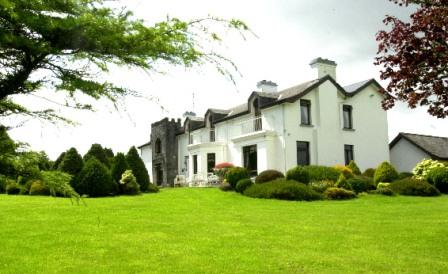
|
| Renmore House | The residence of Patrick Marcus Lynch and his descendants on the outskirts of Galway from the early 19th century, leased from the Governors of the Erasmus Smith Schools. It was valued at £35 at the time of Griffith's Valuation. The house was sold circa 1924 and became a tuberculosis sanitorium. It is now part of a Health Service facility. |
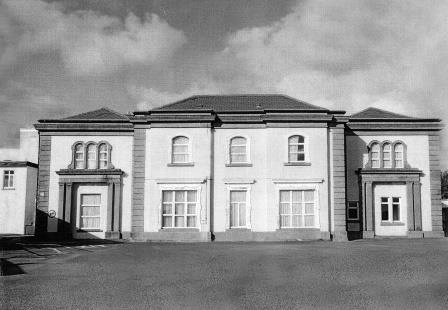
|
| Wellpark | In 1786 Wilson refers to Wellpark as the seat of Mr. French. It became a residence of the MacNamara family early in the 19th century. In 1855 occupied by Martin Morris and by George Morris in the 1870s. The home of the Moffett family in the early 20th century. Frances Moffett wrote the book ''I also am of Ireland'' published by the British Broadcasting Corporation, London, 1985. The house, which was in a derelict condition, was demolished in 2007. | |
| Bushy Park | In 1786 Wilson refer to Bushy Park as the seat of Mr. Burke. Occupied by Edward McDonnell in 1814. Two generations of the Martins lived in this house in the 19th century. At the time of Griffith's Valuation, it was occupied by Robert J. Martin and was valued at £12. It is still extant and occupied. |

|
| Newcastle | In 1786 Wilson refers to Newcastle as the seat of Thomas Browne. In the nineteenth century a Persse residence close to their distillery at Nun's Island and their milling operations. Newcastle House was the home of Henry Stratford Persse in the early 19th century. It was later acquired by University College, Galway but was demolished in the early 1970s to make way for new buildings. | |
| Dangan House | In 1786 Wilson writes that "Dangin" was the seat of Richard Martin, "beautifully situated on the banks of the fine river Corrib". Occupied by George Symmes in 1814. The Ordnance Survey Books describe it as "a 3 storey house belonging to the proprietor of the townland, Thomas Redington". It remained the home of the Redington family for most of the 19th century. The house labelled Dangan House on the 1st edition Ordnance Survey map is located very close to the bank of the River Corrib (M283277). By the 1890s it has moved to a site in closer to the centre of the townland. It is now occupied by the Cunningham family who run a garden centre at the same location. A property known as "Dangan Cottage" was located nearby (M280274) but is described as "in ruins" on the 25-inch Ordnance map of the 1890s. Kinmonth states that this property was leased by American artists, including J. Lizzie Cloud, in the 1870s. | |
| Nile Lodge | Nile Lodge is associated with the O'Hara family though at the time of Griffith's Valuation, it was leased by Edward C. Burke from Mark Lynch and valued at £35. It is still extant and occupied. |
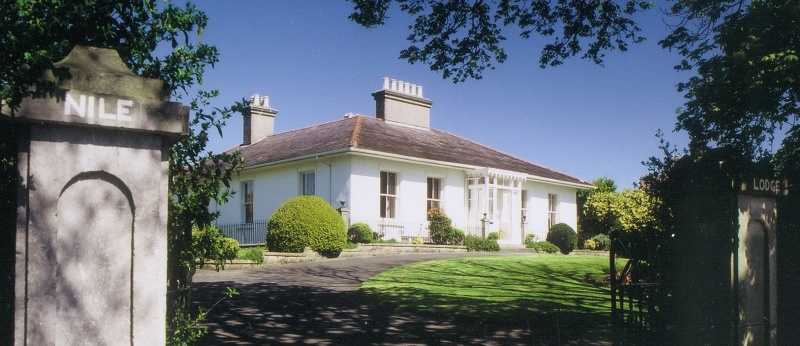
|
| Winterfield House | Described in the 1830s as a neat 2 storied house, the home of Captain Butler. It was held in fee by John Butler at the time of Griffith's Valuation, when it was valued at £15. It is no longer extant. | |
| Rahoon House | In 1786 Wilson refers to Rahoon as the seat of Mr. French. In the early 19th century it was a Bodkin house, occupied by Roderick O'Connor at the time of the first Ordnance survey. It was held in fee by Thomas C. Dickson at the time of Grifith's Valuation and valued at £27. This house was bought by Kennedy O'Brien in the early 1870s and remained in his family's possession until the 1930s. Buildings are still extant at the site. |
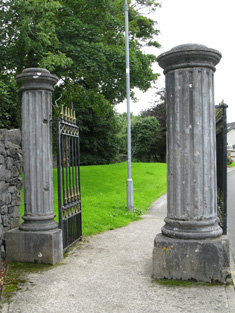
|
| Cregg Castle | Built in the mid 17th century, the home of the Kirwans until the early 19th century. In 1786 Wilson mentions that it was the last castle to be built in county Galway and that it had lately been remodelled by Mr. Kirwan. Later occupied by a branch of the Blake family. It was held in fee by Francis Blake at the time of Griffith's Valuation, when it was valued at £40. Slater notes it as the residence of Mrs. Blake in 1894. Sold by the Blakes in 1947 to the Johnstons, who made alterations and restored it. Bought by the Murrays in the early 1970s, who ran it as a guest house. Sold again in 2006. |

|
| Baunmore | Held in fee by Richard Kirwan at the time of Griffith's Valuation when it was valued at £7. The house was extended and enlarged towards the end of the nineteenth century. It as well as yard buildings, gates and walls still remain. |

|
| Murroogh House | Part of the Blake estate at Merlin Park. Built by James Henry Ryan in the 1860s who spent nearly £5,000 on the property and occupied in the 1880s by the Bishop of Galway. Owned by the newspaper magnate William Randolph Hearst in the 1930s and bought by the Galway Mayo Institute of Technology in 2003. |
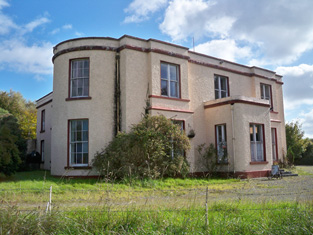
|
| Waterdale | This was originally a Staunton property which passed by marriage to the Lamberts. In 1786 Wilson refers to it as the seat of Mr. Staunton. The OS Name Books record it as the property of James Blake in the 1830s. Sold to Lord Clanmorris briefly in the 1850s and repurchased by James Staunton Lambert, Waterdale was leased to John Wilson Lynch 1857-1870 and to James Delahunt 1870-1883. It was taken over by the Land Commission in 1903 and demolished. |

|
| Annaghdown | A house at this site on the First Edition Ordnance map is labelled Annaghdown House. The current house was built in 1868 by the Blake family It is still occupied and well maintained. |

|
| Ballinduff Lodge | A Skerrett home in the 18th and 19th centuries. It is labelled Ballinduff Lodge on the Ordnance Survey maps though the 25-inch edition of the 1890s notes that it was in ruins by then. At the time of Griffith's Valuation John Skerrett held the lands in fee when the house was only valued at £2. The old castle stands close by the house ruins. |

|
| Moycullen Lodge | Home of the French family in the 18th century. Wilson refers to it as the seat of Mr. French "situated on the side of a small lake". The Ordnance Survey Name Books mention it as the residence of Peter Lynch in the 1830s. It was leased by James Darcy or Thomas Fitzgerald from Lord Campbell's estate at the time of Griffith's Valuation when it was valued at £1+. A more substantial house was afterwards constructed at the site and is labelled Moycullen Lodge on the 25-inch map of the 1890s. It is no longer extant. | |
| Rockwood | John Galway is recorded as the owner of Rockwood at the time of Griffith's Valuation when it was valued at £20. In 1906 Rockwood House was owned by Robert W. Holmes and valued at £20. It was occupied by the Holmes family until after WWI. It was later the property of the Fox family. It was restored in the mid-1980s and is now extant and occupied. |

|
| Rocklawn | The OS Name Books give the name of this house as Rockland and state that it was the residence of the Browne family though they claim that the townland of Pollaghrevagh was the property of Lord Clanmorris. At the time of Griffith's Valuation it was occupied by James French and was valued at £12. By 1906 it was owned by Richard French. Rocklawn House is no longer extant. It is described as "in ruins" on the 1933 printing of the 6" OS sheet for Galway. |

|
| Carnmore | The OS Name Books record Mr. Blake of county Mayo as the proprietor of Carnmore in the 1830s. At the time of Griffith's Valuation Valentine O'Connor Blake was leasing a house valued at £4 and over 100 acres to Arthur Veitch. Some ruins remain at the site. | |
| Lydacan | Lydacan or Lydican Castle was a residence of the Lynch family in the 1770s. The OS Name Books record the "substantial residence of Mr. Gunning" in Lydacan in the 1830s. Lydacan Castle was purchased by Martin O'Flaherty in the mid-19th century and was subsequently sold by him to James Greated. It was burnt in 1922 and the ruins remain. |

|
| Thornpark | At the time of Griffith's Valuation the property at Carrowmoneash, parish of Oranmore, was leased by the representatives of H. Butler to Anne Butler/K.H. Blake. Burke's Landed Gentry (1958) states that Xaverius Henry Blake Butler purchased Thornpark, part of his mother's dowry, in the Landed Estates' Court in April 1860. Sir Henry Blackall states that Xaverius Blake Butler bought Mount Vernon, which he renamed Thornpark, from his nephew Henry.By 1906 the house at Carrowmoneash was owned by James Blake Butler and was valued at £26. Thornpark House is now the Oranmore Lodge Hotel. See www.oranmorelodge.ie for more information. |

|
| Frenchfort | Frenchfort became a Blake property in 1780 when Michael Blake married Anne Ffrench of Frenchfort. Wilson mentions the house as his seat in 1786. He is described as a resident proprietor in 1824. At the time of Griffith's Valuation the house at Frenchfort in the parish of Oranmore was occupied by his grandson, Theobald Blake. The original house does not appear to be present now but the walled garden layout is still visible. |
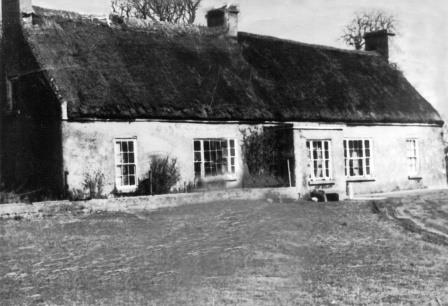
|
| Oranbeg | At the time of Griffith's Valuation the property at Oranbeg was leased by the Fitzgerald Vesey estate to George Hill and valued at £8. It is labelled Vesey Lodge on the 25-inch Ordnance Survey map of the 1890s. It is no longer extant. | |
| Rocklands (Oranmore) | Rocklands was occupied by George Ingham in the 1850s when it was valued at £13. In 1906 it is recorded as the property of Isabella Ussher and was still valued at £13. The house is still extant and occupied. |
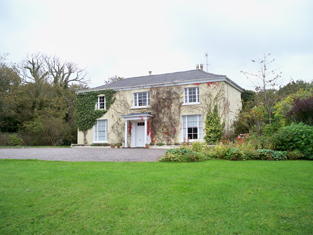
|
| Oran Castle | In 1786 Wilson mentions Oranmore as the seat of Denis Blake. In 1814 and again in 1837 Oranmore Castle is recorded as the seat of Walter Blake. At the time of Griffith's Valuation he was leasing a property, valued at £10, in Oranmore townland, to Martin Grady. Pádraig Lane writes that Walter Blake sold Oran Castle to James Dillon Meldon. The castle was refurbished by the King family in the twentieth century. |

|
| Mount Vernon | The 1882 sale notice for the Burke estate mentions that Mount Vernon cost over £5000 to build a short time before. | |
| Woodpark | Described in the sale rental of 1879 as "a good house, with stables, a walled garden, walled orchard and a park around the house which stands on an elevated site affording a fine view of lake scenery". Peter Newell was occupying the house, then valued at £4, at the time of Griffith's Valuation. It is now a ruin. |

|
| Cloonacauneen Castle | Muriel L. Athy writes that the castle was occupied by Martin Blake in 1835, although it is recorded in the Ordnance Survey Name Books as the property of Mr. French. The property later passed into the hands of Mr Fair "who built against it a Tudor house", his descendant Dr Fair of Ballinasloe sold it to the Estates Commissioners". Owned by James Malley in the early 20th century. Described by Bence Jones as a tower house with an attached wing. Still occupied, it now operates as a bar and restaurant. |

|
| Glenarde | Town house of the Persse family, built in the mid 19th century, bought by the Bolands of Bolands biscuits in the 1920s and since the early 1960s has functioned as the Ardilaun House Hotel. |

|
| Rockhill House | The earlier house at Rockhill was the residence of Daniel Higgins in 1814. At the time of Griffith's Valuation, it was occupied by Dominick D'Arcy and was valued at £9. A new house appears to have been built in the latter half of the nineteenth century and, in the 1870s, it was the seat of Lionel D'Arcy. Rockhill is stil extand and well-maintained. |
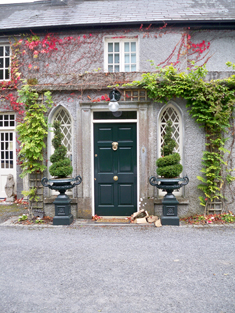
|
| Rinville Lodge | At the time of Griffith's Valuation, Patrick Blake was leasing a house valued at £12 at Rinville West, barony of Dunkellin, from Randal Athy. This appears to be the house known as Rinville Lodge on the first edition Ordnance Survey map. By the 1890s it had become known as Bay View the name by which it is still known. |

|
| Killeen House & Killeen Castle (Oranmore) | In 1814 Killeen Castle is recorded as the home of Marcus Blake. By the time of Griffith's Valuation it was used by the Cullinane family who lived at Killeen House nearby. The latter property was valued at £10 at the time of Griffith's Valuation. The castle and its adjacent buildings afterwards fell into ruin but was restored in the later twentieth century and is now occupied once again. Killeen House was demolished in the twentieth century. | |
| Carrickmore House (Furbo) | A house built on land owned by Andrew Blake at the time of Grifith's Valuation. The National Inventory of Architectural Heritage suggests it was built c.1860. It was renovated in recent times. |
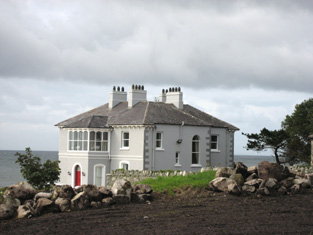
|
| Marino Cottage | This house, labelled Marino Cottage on the First Edition Ordnance Survey map,was vacant at the time of Griffith's Valuation, when it was part of the estate of Andrew Blake. It had a valuation of over £23 at that time. The house no longer exists, having been replaced in the twentieth century by the Connemara Coast Hotel complex. | |
| Kingston House (Galway) | Richard N. Somerville was the owner of over 70 acres in the county of the town of Galway in the 1870s. He was the owner of Kingston House at the time of Griffith's Valuation, when it was valued at £14 and was unoccupied. By the 1890s it was occupied by a religious order. | |
| Albano Cottage | At the time of Griffith's Valuation, Rev. Peter Daly was leasing this property from James Browne when the buildings were valued at £9. It is still extant and occupied. | |
| Carrowbrowne Castle | In 1786 Wilson refers to Carrowbrowne as the seat of Mr. Blake. This may refer to Walter Blake as family history records suggest some of his children were born at Carrowbrowne. The castle is shown and labelled on the 1st edition Ordnance Survey map of 1842. The townland is part of Lord Oranmore and Browne's estate at the time of Griffith's Valuation. By the time of the 25-inch edition of the 1890s it is shown as "in ruins". Some ruins still remain at the site. | |
| Angliham | In 1786 Wilson refers to "Anglngiham" as the seat of Mr. Bateman. The Ordnance Survey Name Books indicate that the townland of Angliham or Gortacallow, in the parish of Oranmore, was the property of Thomas Bateman of Altavilla, Rathkeale, county Limerick. The description mentions that the townland contained the ruins of an old building " formerly the residence of Mr. Bateman's ancestor". | |
| Claregalway Castle | In 1786 Wilson refers to "the ancient castle of Clare-Galway, the seat of Michael French". Both the 1st edition and 25-inch edition indicate that the original tower house was in ruins but extensive adjacent buildings are shown on the 25-inch map. At the time of Griffith's Valuation, it was part of Lord Clanmorris's estate and was leased to Patrick Reilly when the buildings were valued at over £5. The castle is still extant and undergoing a programme of renovation. | |
| Fort Eyre | At the time of Griffith's Valuation a property here, owned by Reverend E. Maunsell, was being leased by Richard A.H. Kirwan and was valued at £42. The house is labelled Fort Eyre on the 1st edition Ordnance Survey map. It is still extant. |
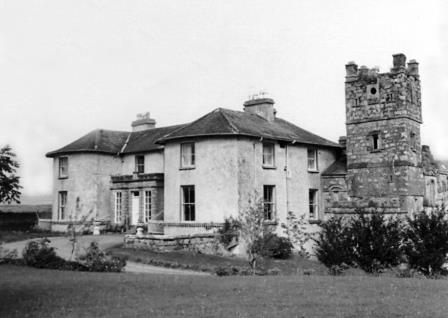
|

